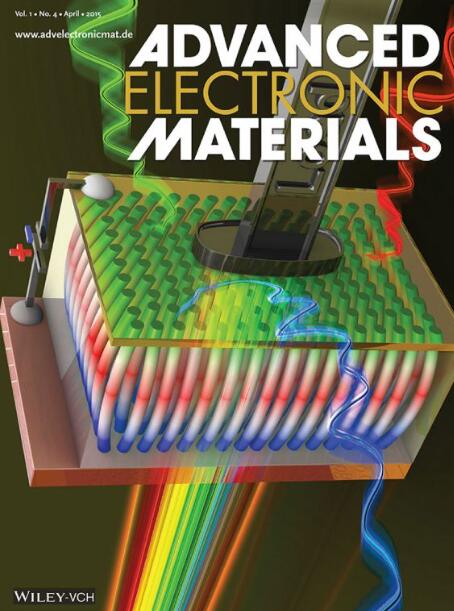在模拟存储器和神经形态结构中应用的低低温铁电电容器的基于物理的紧凑模型
IF 5.3
2区 材料科学
Q2 MATERIALS SCIENCE, MULTIDISCIPLINARY
引用次数: 0
摘要
双氧化物铁电体,如掺杂HfO2,与互补金属氧化物半导体(CMOS)平台兼容,在节能、可扩展、高性能非易失性存储器和神经形态技术方面获得了极大的兴趣。然而,没有一个单一的模型可以解释系统的物理性质,同时兼容电路仿真和计算效率。基于Jiles-Atherton方程,建立了基于物理的紧凑模型,再现了不同电场和温度条件下铁电薄膜电容器中实验测量的极化开关。此外,器件之间的变化对模型参数的影响,这将使有限元元件大规模集成到复杂的功能电路。由于对量子计算和空间技术中低温电子学的兴趣日益增加,温度对极化开关的影响被研究到4k以下。结果表明,在低至4 K的不同电场和温度下,包括模拟开关,该模型能以接近100%的准确度再现氧化铪锆电容器的实验极化电压关系。结果表明,将器件冷却至100k以下可显著提高器件的偏振更新线性度和对称性。这一结果代表了铁电电容器在大规模存储和深低温下神经形态电路应用方面的重要进展。本文章由计算机程序翻译,如有差异,请以英文原文为准。

A Physics-Based Compact Model for Ferroelectric Capacitors Operating Down to Deep Cryogenic Temperatures for Applications in Analog Memory and Neuromorphic Architectures
Binary oxide ferroelectrics like doped HfO2, compatible with complementary metal-oxide-semiconductor (CMOS) platforms, have gained significant interest for energy efficient, scalable, high-performance non-volatile memory and neuromorphic technologies. However, there is no single model for doped hafnia systems that can explain physical properties of the system while being circuit simulation compatible and computationally efficient. It is presented physics-based compact modelling based on the Jiles-Atherton equations to reproduce experimentally measured polarization switching in ferroelectric thin film capacitors under different electric field and temperature conditions. Additionally, device-to-device variation effect on the model parameters is presented, which will enable large-scale integration of the FE components to complex functional circuits. Due to increasing interest in cryogenic electronics for quantum computing and space technologies, effect of temperatures on polarization switching is investigated down to 4 K. It is shown the model can reproduced the experimental polarization-voltage relation of Hafnium Zirconium Oxide capacitors with nearly 100% accuracy, for different electric fields and temperatures down to 4 K, including analog switching. It is find cooling the devices below 100 K increases polarization update linearity and symmetry significantly. This results represent an important advancement toward application of ferroelectric capacitors for large-scale memory and neuromorphic circuits operating down to deep cryogenic temperatures.
求助全文
通过发布文献求助,成功后即可免费获取论文全文。
去求助
来源期刊

Advanced Electronic Materials
NANOSCIENCE & NANOTECHNOLOGYMATERIALS SCIE-MATERIALS SCIENCE, MULTIDISCIPLINARY
CiteScore
11.00
自引率
3.20%
发文量
433
期刊介绍:
Advanced Electronic Materials is an interdisciplinary forum for peer-reviewed, high-quality, high-impact research in the fields of materials science, physics, and engineering of electronic and magnetic materials. It includes research on physics and physical properties of electronic and magnetic materials, spintronics, electronics, device physics and engineering, micro- and nano-electromechanical systems, and organic electronics, in addition to fundamental research.
 求助内容:
求助内容: 应助结果提醒方式:
应助结果提醒方式:


